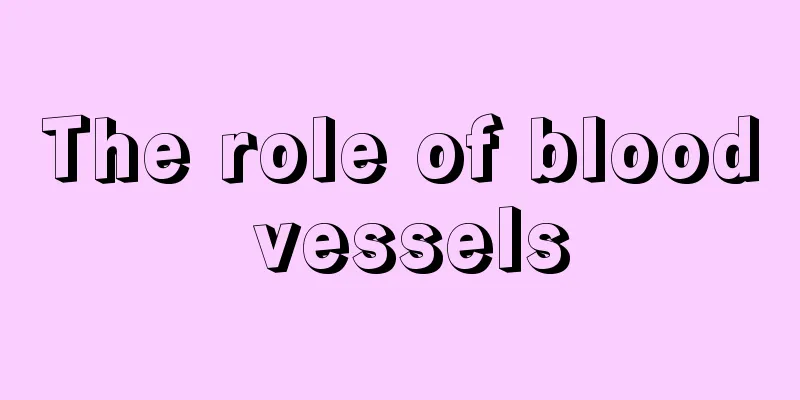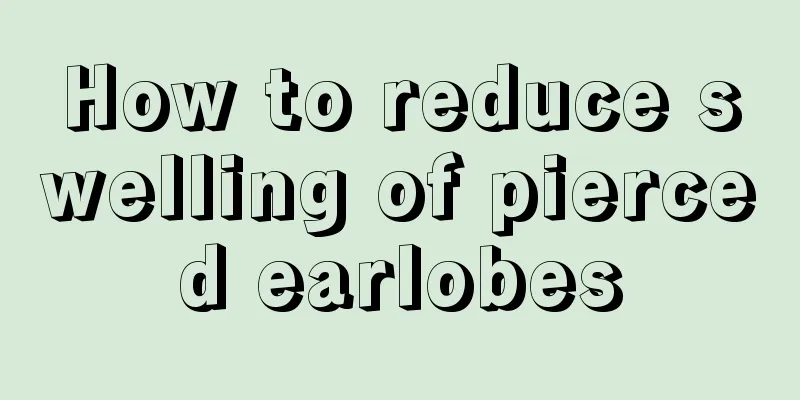The role of blood vessels

|
There are many blood vessels in our body. These blood vessels are basically divided into arteries, veins and capillaries. These blood vessels are very important to us. They are mainly used to help us complete blood circulation. If the blood circulation in our body cannot proceed normally, our body's life activities will be disturbed to a certain extent. So what are the specific functions of blood vessels in the body? The cardiovascular system consists of the heart, arteries, veins, and capillaries. 1. Heart: A power organ composed of cardiac muscle. There are four heart chambers (left and right atria, left and right ventricles). There is a one-way valve inside to ensure that blood flows in one direction. 2. Arteries: Tubes that carry blood from the heart to peripheral organs. Morphological characteristics: Its caliber gradually becomes thinner, and it is divided into three types of arteries: large, medium and small. The tube wall is rich in elastic fibers and smooth muscles. Its structure is closely related to its function (continuous flow of blood, formation of blood pressure). 3. Veins: Channels that carry blood from the periphery to the heart. Step by step, the caliber becomes larger and is injected into the atrium. Morphological characteristics: The tube wall is thin, and the elastic fibers and smooth muscles are underdeveloped. But the caliber is larger and it serves as a reservoir for blood. 4. Capillaries: Tubes between the ends of arteries and veins, distributed in almost every organ in the body. Morphological characteristics: small diameter, thin wall, and only one layer of endothelial cells. The blood flows slowly in it, which is conducive to the exchange of substances. 5. Vascular anastomosis: anastomosis between arteries, anastomosis between veins, anastomosis between arteries and veins, and collateral anastomosis. The function of the heart is to promote blood flow, provide sufficient blood flow to organs and tissues to supply oxygen and various nutrients, and take away the end products of metabolism (such as carbon dioxide, urea and uric acid, etc.) so that cells maintain normal metabolism and function. Various endocrine hormones and some other humoral factors in the body also need to be transported to target cells through blood circulation to achieve the body's humoral regulation and maintain the relative constancy of the body's internal environment. In addition, the realization of the blood's defense function and the relatively constant regulation of body temperature also depend on the continuous circulation of blood in the blood vessels, and the circulation of blood is achieved due to the action of the heart "pump". Blood vessels are the series of tubes through which blood flows. The human body has blood vessels throughout its body except for the cornea, hair, nails, teeth and epithelium. According to the different structures and functions of blood vessels, they are divided into three types: arteries, veins and capillaries. Arteries originate from the heart, branch out continuously, become smaller in caliber and thinner in walls, and finally separate into a large number of capillaries, which are distributed throughout the tissues and cells of the body. The capillaries then merge again, gradually forming veins, and finally returning to the heart. Arteries and veins are channels for transporting blood, capillaries are the place where blood and tissues exchange substances, arteries and veins are connected through the heart, and blood vessels throughout the body form closed channels. The distribution of blood vessels in the human body is often symmetrical and adapted to the function. Large blood vessels are mostly parallel to the long axis of the body and are wrapped together with nerves by connective tissue membranes to form vascular-nerve bundles. The circulatory system is composed of the heart and blood vessels. The heart is the driving organ that drives blood flow, and the blood vessels are the channels through which blood flows. Blood vessels are divided into three categories: arteries, capillaries and veins. Blood ejected from the ventricles returns to the atria through the arteries, capillaries, and veins. Blood vessels play an important role in transporting blood, distributing blood and exchanging substances. |
<<: What to eat on Dragon Boat Festival morning
>>: What is the temperature for making milk in summer
Recommend
What are the early symptoms of lung cancer? Experts teach you two ways to prevent lung cancer
Lung cancer is the most common cancer in our live...
What types of human herpes viruses are there?
The human body is one of the organisms with the l...
What is the reason for yellow saliva
Everyone has saliva, and a lot of it is secreted ...
Can a patient with cervical cancer 1b1 live for decades
In recent years, many patients have such question...
Tips to relieve angina pectoris
Angina pectoris is a very serious heart disease. ...
What are the symptoms of Qi and Yin deficiency
Patients with Qi and Yin deficiency often feel sw...
There is a fleshy pimple inside my lip
A lump of flesh inside the lip may be caused by g...
What is the best treatment for glioma
Glioma is a difficult problem in neurosurgery. Al...
What are the dietary taboos for prostate cancer patients
Prostate cancer is a malignant tumor that occurs ...
Is thrombocytopenic purpura easy to treat?
Thrombocytopenic purpura is also called primary i...
Are Sea Dog Ginseng Pills real?
Sea lion ginseng pill is actually a kind of healt...
How to treat multiple aseptic inflammations in the spine
Aseptic inflammation is a typical manifestation o...
What are the symptoms of patients with advanced lung cancer? Experts point out 5 symptoms of advanced lung cancer
Lung cancer is a malignant tumor disease. Once it...
What are the requirements for moving into a new house?
When moving to a new home, people will be very ha...
How to protect oral mucosa, three 'great gods' come to give you tips
To prevent oral diseases, it is very important to...









